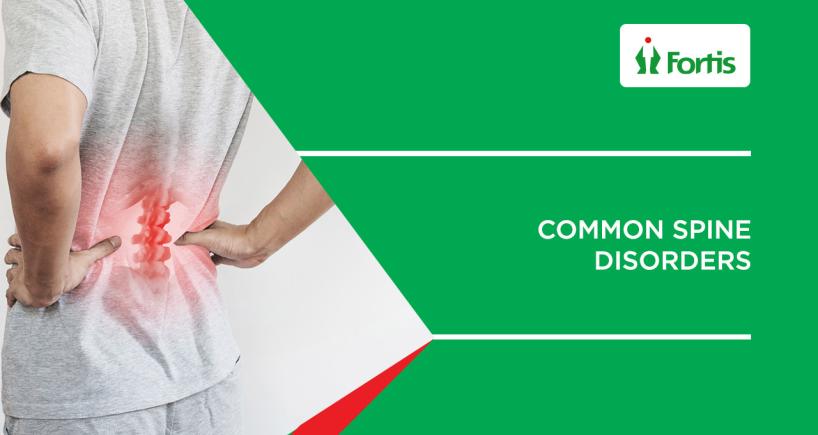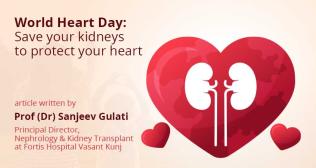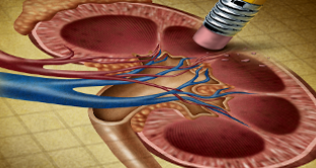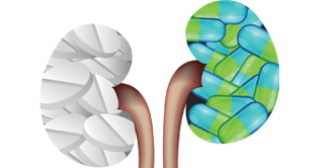
Common Spine Disorders
The spine or the backbone is the main supporting structure of the body extending from the base of the brain to the tailbone. The brain and spinal cord together constitute the central nervous system (CNS). While providing structural support for the body, the spinal cord also supports the nervous system of the entire body. The spinal column is made up of 33 bones and allows the body to be held upright, and also provides flexibility for the body to bend and twist in all directions with ease.
The anatomy of the spine can be best described by segmentalizing it into 3 major sections. These are commonly known as the lumbar, thoracic, and cervical sections which are further made up of individual bones known as vertebrae. In any bodily position, this complex mechanical structure has considerable physical demand placed on it. A normal adult spine is a curved, double S-shaped structure balanced over the pelvis. This complex yet sophisticated system relays information from the skin, muscles, and joints to the brain. The new information that is processed in the central nervous system is then transmitted to the motor tracts of the spinal cord to the rest of the body.
Constant or recurring back or neck pain can be the result of various conditions. It is necessary and useful to be aware of the possible commonly occurring spine disorders to be able to seek appropriate medical attention. Our spine specialists at Fortis Hospital Kalyan always recommend getting a comprehensive physical examination for obvious signs of wear and tear along with a detailed medical history from the patient to proceed with the required treatment modalities. Patients across all age groups with a wide array of spine disorders have been successfully treated by our team of specialists at Fortis Kalyan.
Disorders of the spine produce a wide range of symptoms that can potentially disrupt an individual’s functionality on multiple levels. The most commonly occurring disorders of the spine are due to wear and tear or acute injuries. While most people are accustomed to thinking that back pain can occur due to strenuous sports and activities such as golf or horse riding, poor sleeping positions or poor posture during long hours of work can also lead to chronic back pain issues. Sudden injuries in the spinal region are mostly due to accidents, falls, or fights.
You could have one of the following spine conditions if you are constantly complaining of pain in the back and neck region:
1. Spinal cord injuries
Injuries that occur as a result of a blow to the spinal cord can result in permanent damage and loss of strength and function below the site of injury in some cases. The common symptoms of spinal injury are weakness or decreased sensation in the upper and lower extremities, difficulty in breathing, the presence of unusual lumps along the spine, excruciating pain in the neck and back region and loss of bladder control at times.
2. Spondylosis
This type of back pain that worsens with age is due to degenerative conditions of the spine that occur due to age-related wear and tear. While this condition is fairly common, it is not a serious disorder and can at times show no symptoms in the patient. The degenerative changes can lead to malalignment, pain, and stiffness in the spine and also cause muscle spasms.
3. Herniated discs
These problems arise in the rubber discs between the bones of the spine causing irritation in the nerves, numbness, and pain in any of the extremities. A herniated disc will usually heal itself over time and surgical intervention is only required if there is no improvement in a few months.
4. Spinal stenosis
Narrowing of the spinal canal leads to spinal stenosis and can thus put pressure on the spinal cord. This type of pain usually occurs in the lower back and neck region. While it is not a condition that requires routine surgery, spinal stenosis can be controlled with physiotherapy and medication.
Spinal disorders occurring due to accidents, falls and tumors can be unavoidable, but certain lifestyle modifications can go a long way in preventing spinal damage and discomfort. Our team of experts at Fortis Hospital Kalyan recommends regular stretching and back strengthening exercises and maintaining a good and erect posture while sitting and sleeping. Avoid lifting very heavy items and maintain an active and healthy lifestyle and an optimum body weight. Careful and monitored changes can drastically improve posture and spinal health.
Categories
Clear allMeet the doctor

- Orthopaedics | Orthopaedics
-
30 Years
-
1500



















